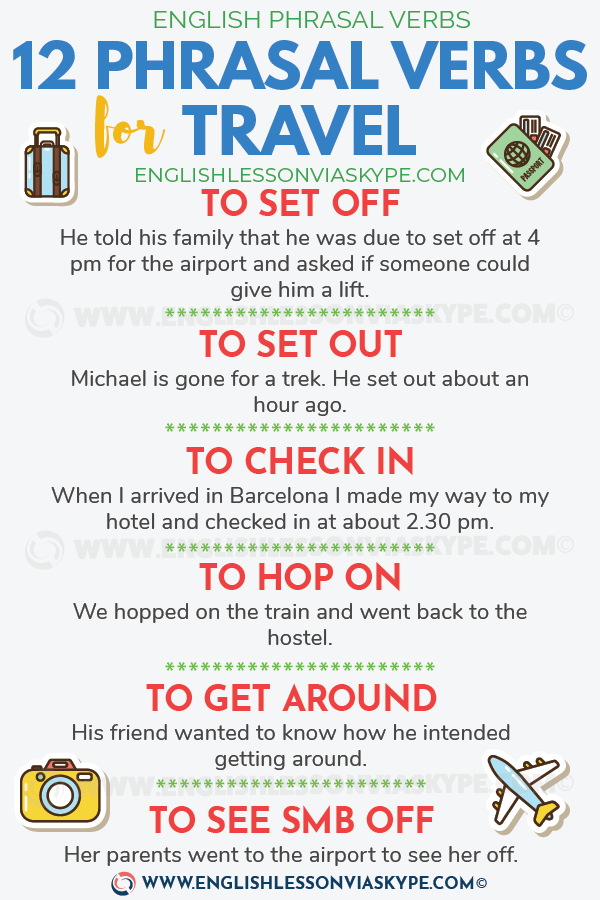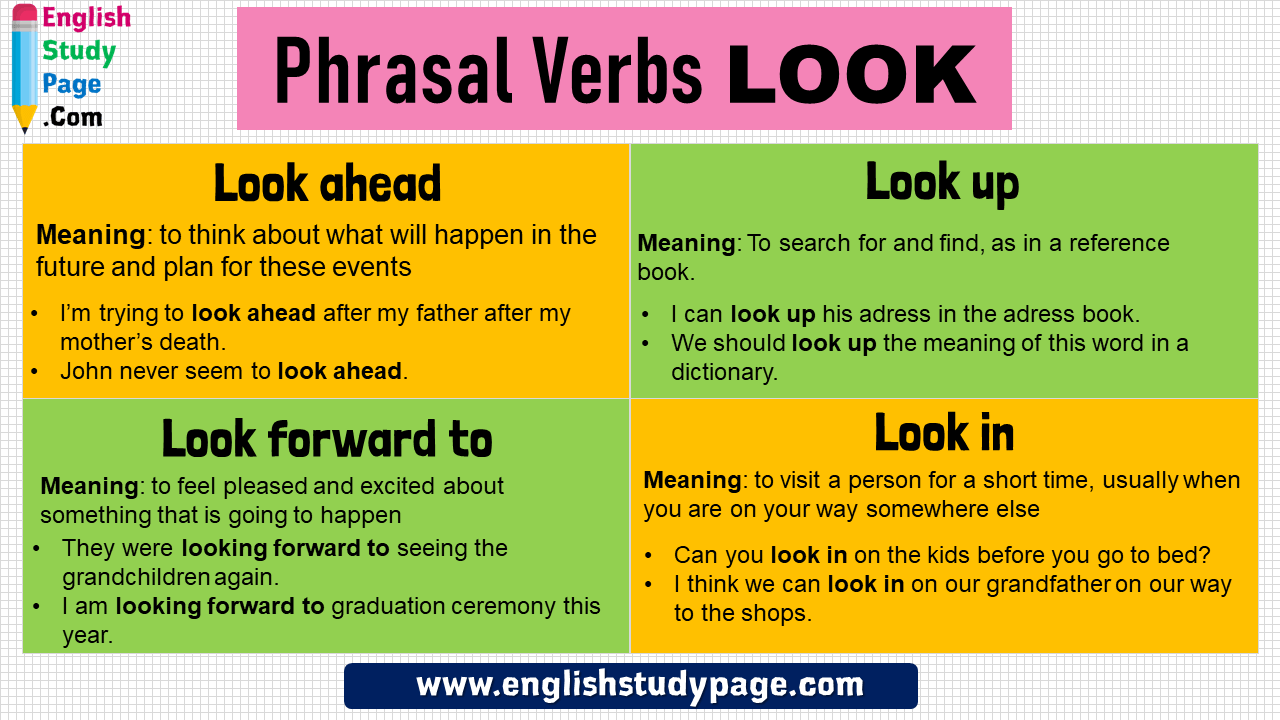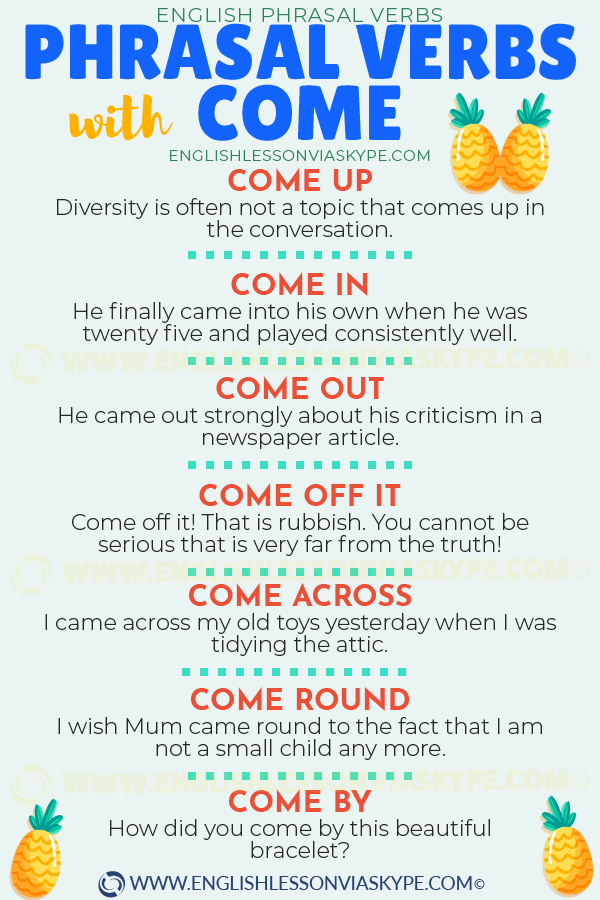At novice or intermediate levels, it is not easy for EFL learners to completely assimilate and acquire certain intricacies of grammar. Sometimes, L2 students cannot distinguish a clear cut correlation between in-class presentation and practice with out-of-class use and production in real-life contexts. The following sample lesson complements the seventh lesson of the course units. One of the main objectives of this material is to present and teach some phrasal verbs in context by using samples of authentic language. The authentic materials consisted of magazine advertisements and newspaper headlines. Sample activities 1 and 2 attempt to help learners get acquainted with the meaning of phrasal verbs in their context.
Sample activity 3 is based on authentic language as learners read a series of magazine covers and underline all the phrasal verbs; then, they come up with a short definition for each verb. The following activity takes place at the computer lab as students look for sample covers that contain at least one phrasal verb. Also, they must define each verb and write an original sentence using the same phrasal verb in context. At the lab, learners use the multimedia projector or smart board to present their sentences. To establish cooperative learning, group work is also part of the teaching/learning process. To achieve this, students get in small groups and create their own magazine covers in which phrasal verbs are incorporated to complete sample activity 5.
Once again, they do this at the computer lab to facilitate the designing process. Also, students may choose a topic they find interesting or appealing such as sports, nutrition, computer equipment, home improvement, video games, health, gardening, and the like. The second part of the lesson is also conducted at the computer lab. Students are given a set of authentic newspaper headlines so that they define the phrasal verbs in boldface. In relation to sample activity 7, students surf the Net and look for newspaper headlines that include at least one phrasal verb; they need to define the verb as well.
Then, they are asked to read the content of the article to present its main ideas orally in front of the class. Because this is time consuming, this part of the lesson may be divided into two sessions. Finally, sample activity 8 is a follow-up speaking task in which learners work in pairs and take turns to ask a series of questions. In this case, they must use the given phrasal verbs in their answers orally. Students may use the phrasal verbs incorrectly in their sentences during this part of the exercise. However, later in the exercise they will be able to correct their sentences.
The goal at this step is for students to inductively learn the meanings of the phrasal verbs. In an inductive learning approach, students use examples to guess and come to learn the rules of grammar or word meanings. In relation to the components of this quiz, students carried out four different types of exercises.
First, they were asked to rewrite the content of sentences in a way that the underlined part includes the correct phrasal verb taken from a word bank. Secondly, they read a set of five questions; then, they had to circle the answer that correctly matches the meaning of the phrasal verb in each sentence. In the case of the third exercise, they had to complete a set of sentences with the phrasal verbs from a word bank. Finally, the fourth exercise included five phrasal verbs so that students create their own original and contextualized sentences to show they knew their meaning. Table 9 shows the final results obtained by the 18 students. Each of the following sentences uses a phrasal verb.
Read each sentence carefully and figure out exactly what the sentence is trying to say. Often, phrasal verbs have different meanings than a verb being modified by adverbs or prepositional phrases. You may also notice that some of these phrasal verbs can be separated out and the sentence will still make sense.
Moreover, phrasal verbs can be intransitive -- not followed by a direct object – or transitive – followed by a direct object. Therefore, phrasal verbs can be separable, inseparable, transitive or intransitive . This occurred although absenteeism was an important drawback in this kind of English course. By using authentic and appealing materials to present phrasal verbs in context, learners will certainly benefit from a motivating and meaningful content and engage more actively in class. The teaching and learning of phrasal verbs is quite challenging among novice and low-intermediate EFL populations. For this reason, the main objective of this study is to specifically observe a group of EFL learners' acquisition of a series of forty phrasal verbs as a result of explicit instruction.
The selection of phrasal verbs attempts to complement those presented in the course textbook and the grammar booklet. This study also presents a sample lesson to teach such content in a first-year English course. This lesson was implemented with a group of students who enrolled the course LM-1001 Integrated English I at the University of Costa Rica.
Multi-word verbs are verbs that combine with one or two particles, which may be adverbs or prepositions, to make new verbs. They are sometimes called phrasal verbs. A lot of common verbs do this and many of them can combine with several different particles.
Each one changes the meaning of the verb. After a few class sessions, students worked with class material and sample lessons on phrasal verbs, their meaning, form, and use. Later, they were given a second instrument that assessed the same phrasal verbs in a way that learners would not notice that those verbs were informally evaluated beforehand.
It is important to say that students get familiar with several verbs besides the ones spotted in these instruments. So, the instructor did not focus exclusively on the target ones during the class sessions. The results are summarized in the next chart.
From the perspective of verbs, Table 5 indicates that 18 verbs were used correctly by most students on the scale of the passing grade. Some transitive phrasal verbs can be split up, with the object going between the verb and the preposition/adverb. These are called separable phrasal verbs. Transitive phrasal verbs that cannot be split up are called inseparable phrasal verbs.
Phrasal verbs are an important part of learning the English language. Most phrasal verbs consist of two words (verb + adverborverb + preposition) but a few consists of three words. Think of them as you would any other English vocabulary. Study them as you come across them, rather than trying to memorise many at once. The word parts of transitive phrasal verbs either can be separated, that is the particle can be separated from the verb by the direct object, or cannot be separated.
You probably use phrasal verbs, or verbs made of two to three words, every day and don't even realize it. Phrasal verbs can't be translated literally, so you have to learn them by definitions and examples. A complete phrasal verb list in English would include hundreds of phrasal verbs, but these examples can help you understand this part of speech. The difficulty in learning phrasal verbs is two-fold, the unpredictability of their idiomatic meaning and the rules describing how they may be entered into the rest of the sentence.
For the first difficulty, only two solutions exist—memorizing the phrases and immersing yourself in the English language. Give the students time to work on the list. Be sure to circulate among the students and check their work. Encourage them to include write complete sentences, or at least use a verb and a noun in their ideas. Later, students will replace these verbs with phrasal verbs. End this portion of the activity by having the class come back together, but with students still in their teams.
Have teams share their phrasal verbs, definitions, and sentences with the whole class and discuss the teams' answers as a group. Confirm which of the phrasal verbs they got correct and correct any phrasal verbs that were incorrect. To establish learner autonomy regarding the study of phrasal verbs, students may use flashcards as a learning strategy. These "cards are a reliable source for self-study and the students know precisely why each card is in the box and are able to evaluate which word to focus on" (Coxhead, 2006, p.42). By doing so, learners may easily consult the meaning, form, and use of phrasal verbs.
The terminology of phrasal verbs is inconsistent. Modern theories of syntax tend to use the term phrasal verb to denote particle verbs only; they do not view prepositional verbs as phrasal verbs. In contrast, literature in English as a second or foreign language ESL/EFL, tends to employ the term phrasal verb to encompass both prepositional and particle verbs. The Oxford dictionary, defines phrasal verbs as a verb that is made up of a main verb together with an adverb or a preposition or both.
Typically, their meaning is not obvious from the meanings of the individual words themselves. The problem with phrasal verbs lies in their second element which is, for reasons that I do not find very clear, most of the times called a PARTICLE. According to some, a particle can be either a preposition or an adverb. If we believe others, it can only be an adverb (The verb+ preposition compounds are then simply called prepositional verbs).
One of the hardest things about learning phrasal verbs is trying to memorize all of their different meanings. In this English class, you will learn the three common usages of the phrasal verb give back. I will teach you this phrasal verb by showing it to you in everyday contexts that will make the usage easy to remember. If you enjoy phrasal verb lessons like this one, you will also enjoy my book, 100 PRACTICAL ENGLISH PHRASAL VERBS!
It includes over 900 examples, only the most current usages, 20 lessons of context-based learning, and it groups related phrasal verbs together. Each activity this month provides students a context to learn the meanings of specific phrasal verbs and opportunities to practice these phrasal verbs in the same context. Phrasal verbs are perhaps the best-known example of the difference between formal and informal English. Phrasal verbs are never used in academic writing, yet phrasal verbs seem to be everywhere in spoken English. Without them, our students' spoken English can appear too formal.
Our students need phrasal verbs to make their spoken English more natural and conversational. Yet, for our students, the number of phrasal verbs and the rules around phrasal verbs can make learning them intimidating. Separable phrasal verbs follow different rules, however. For starters, separable phrasal verbs are always transitive, so they always have a direct object. There are hundreds of phrasal verbs so you obviously can't learn them all together like a list of vocabulary.
You need to consider them like any other verb that needs to be learnt. When you come across a new phrasal verb, pay particular attention to it. Try to understand the meaning from the context, then if you still don't understand, look it up in the dictionary. Try to use an English monolingual dictionary so you read the definition and synonyms in English. As you learn new phrasal verbs, think about how YOU would use them. Write phrases or sentences you may use in the future that use those phrasal verbs, and review them regularly.
Just a couple minutes of reviewing your list each day can make a big difference in your ability to use those terms while you're speaking. A complex aspect of phrasal verbs concerns the distinction between prepositional verbs and particle verbs that are transitive . Particle verbs that are transitive allow some variability in word order, depending on the relative weight of the constituents involved. Shifting often occurs when the object is very light, e.g. Phrasal verb.1 She looked his address up. Phrasal verb.2 When he heard the crash, he looked up.
Not a phrasal verb.2 When he heard the crash, he looked up at the sky. Not a phrasal verb.The terminology used to denote the particle is also inconsistent. Sometimes it is called an adverb and at other times an intransitive prepositional phrase.
The inconsistent use of terminology in these areas is a source of confusion over what qualifies as a phrasal verb and the status of the particle or a preposition. Surf the Net and look for three magazine covers that contain phrasal verbs. Look for magazines with appealing topics for you . Keep in mind that some verbs may be separable or non-separable. Get ready to present this with the multimedia projector. Thus, prepositional phrasal verbs give an additional level of difficulty to most students.
On the other hand, from the point of view of these 18 students, the average of accuracy level is 6.0. Table 4 compiles the students' previous knowledge on a series of 20 non-separable phrasal verbs. For each correct use of a given verb in a sentence or definition, the author used check marks (() and an "X" is used for mistakes. Now that you know what verbs, adverbs, prepositions and particles are, you're ready to start putting them together into phrasal verbs. There are no rules for helping you to determine which transitive phrases are inseparable; you just have to memorize them. In these cases the verb and the preposition or adverb cannot be separated by the direct object.
But because their meanings are idiomatic, there is no logical pattern or formula for learning them. And to make matters worse, many phrasal verbs have more than one idiomatic meaning. For instance, "take back" can also mean to return merchandise for a refund. After the phrasal verbs have been reviewed, have the groups start a discussion around the questions and organize a party.
The student with the Party Planning sheet should ask the questions and the rest of the students should respond. The organizer should write down the group's answers on the Party Planning sheet underneath each question. This phrasal verb activity begins with a warm up activity to provide students with more structured practice using phrasal verbs. However, more advanced classes can skip Part 1 depending on class time.
The goal in this part of the activity is for the students to think critically about each of the phrasal verbs. Even though they are writing definitions, these definitions may be incorrect. At this stage of the lesson, that is acceptable. Other teams may rely on their memory of the material covered in the game in Part 1, and this is acceptable as well.




























No comments:
Post a Comment
Note: Only a member of this blog may post a comment.